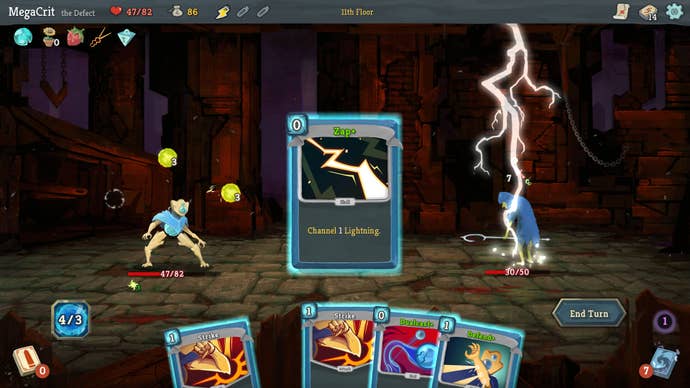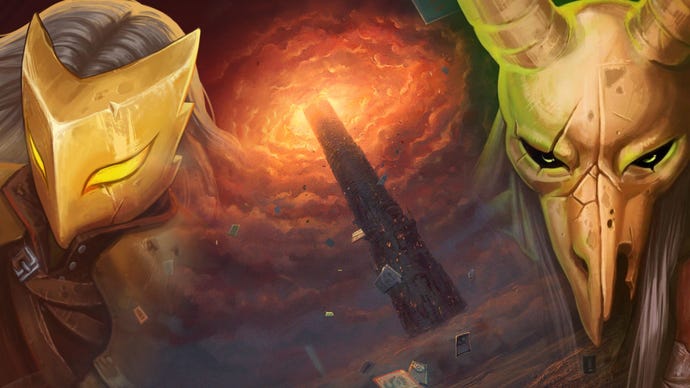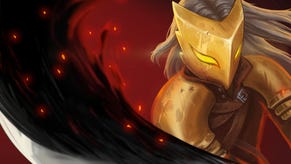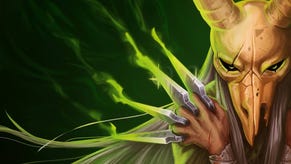PS Plus April includes one of the best games you'll ever play
More than the sum of its parts, Slay the Spire is one of the most endlessly playable games I've ever had the pleasure of experiencing.
Slay the Spire is one of the best games I've ever played. I think I've got over 100 hours in the game on Switch, and another 50 or so on Xbox. And, thanks to the announcement that it's coming to PS+ in April, I'm probably going to sink another 50 into it on my PS5, too.
Let's start with a a top-line of what Slay the Spire actually is: it's a turn-based, dungeon-crawler, deck-builder that plays like a roguelike. Think Binding of Isaac meets Hearthstone (or Magic: The Gathering meets FTL: Faster Than Light) and you've got a very rudimentary base to build off. But those comparisons have limited use, because the game is unique – and therein lies its specific and undeniable charm.
Starting up a new save, you will play as one of the four main characters in the game. You will have a basic and fairly underpowered deck. But that's good, because you will be forced to learn the mechanics, one by one. You'll learn quickly that this is a deck builder that's less about getting a lot of cards in your deck, but instead about controlling what comes into your hand.
Your first character, the Ironclad, can heal himself slightly at the end of every battle – so picking up cards that cause damage to himself in order to dish out more punishment makes sense. But your second character, the Silent, is more of a glass cannon that can multi-attack and stack poison on enemies, but has less health and cannot heal.

The most dangerous enemy in this game is not the big, multiplying slime boss at the end of world one, the infuriating 'ritual' enemy that can wipe you out in one hit near the end of the game, or the bands of thieves that may ransack your coffers inbetween... no. The most deadly enemy you'll encounter in Slay the Spire is greed.
Want an extra card for your build? See a relic that'll let you diversify your strats just out of reach? Fancy taking some damage to get a bit more gold in between fights? Go ahead, risk it. Chances are that the 4HP you just sacrificed will be your undoing in the next encounter. Back to square one you go.
Unlike some of its roguelike brethern, though, Slay the Spire at least gives you experience per run, allowing you to unlock more cards and relics as you progress through more and more attempts to – you guessed it – actually slay that eponymous spire.
Even if you die after the second boss, you'll probably get just enough experience to unlock a new power card (read: something that gives you a buff for the rest of the encounter) that makes you think "damn, I should play another run and build something around that." Voila! Another 30 minutes of your life rushes by. You die again. But you come up with a new strat – probably around poison and throwing knives – and dive back in. Rinse, repeat – oh damn, it's 4am.

Even after a few hours of playing, you'll start to understand the value of the game's main mechanics: cards, armour, energy, relics. You start to interpret enemy attacks (their next turn intention is always shown above their head) and learn how to mitigate it to the best of your ability. You learn how to get better decks, quickly. You learn which relics are worth hunting down, and which you should ignore. You learn which encounters you should stay the hell away from, and which mysteries are worth investigating.
Like all the best games in this genre, Slay the Spire is incredibly easy to pick up – but fiendish to master. The nuance involved in building a killer deck is sublime. The discretion you need to employ to not overload your deck is a masterclass in self-control. The constant dance between luck, skill, and insight in your head as you desperately try to find the solution to last just one more turn in that final boss fight is gaming catnip.

Beating the game is just the beginning, too. Like all the best roguelikes (Issac, Gungeon, Hades, et al), wrapping up the main path once is simply the tip of the iceberg. You'll need to do it again, with all the characters. Then you'll do it again, with the right relics in your inventory. Then you'll find new bosses, and new levels, and new tasks.
And if that isn't enough for you, what about the daily tasks? Or all the Trophies? There's a reason I've sunk nearly 200 hours into this beautiful bastard of a game – the more time you spend with it, the deeper it gets, and the more its magic shows.
Sure, the animations are rudimentary and the art looks like something from Newgrounds in the early 00s. Sure, the sound design could use some work. But hey; this is a 5/5 game for me, in spite of all that. Because – from a game design perspective – it's simply one of the most compelling and well-oiled things you're ever going to pick up. It's so influential, in fact, that the developers from Marvel's Midnight Suns have cited it as a major inspiration in their game (I talk a little about that here).
And, better yet, this is the complete package: a lot of card-based video games are service-based: YuGiOh, MTG, Hearthstone... they're designed to keep you playing and paying. Slay the Spire isn't. And yet, I'd argue, it has more value than all of those games (maybe even put together).
I have bought this game three times already, and now that it's coming to PS+, I am going to own it a fourth time. And I cannot encourage all of you to do the same thing. You've got nothing to lose, and so, so much to gain.











